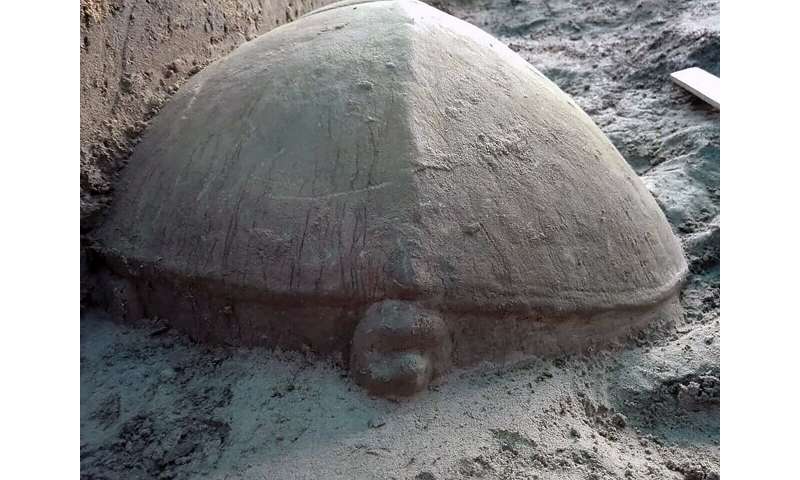Historic statue unearthed at Cambodia's Angkor
09:46, May 08 2020

The Angkor complex is Cambodia's biggest tourist attraction.
Cambodian archaeologists have unearthed a large centuries-old statue of a turtle in an excavation at the famous Angkor temple complex in the country's northwest.
The 56-by-93 centimetre carved stone turtle believed to date from the 10th century was discovered Wednesday during digging at what was the site of a small temple that had been built on Srah Srang, one of Angkor's several reservoirs.
Researchers pinpointed where the temple had been and workers drained water off to enable the dig, which began March 16, said Mao Sokny, head of the excavation team of the Apsara Authority, a government agency that oversees the Angkor archaeological site.
The bottom half of the turtle remained buried on Thursday while preparations were being made to lift it out without damaging it.
More:
https://www.stuff.co.nz/travel/destinations/asia/121449913/historic-statue-unearthed-at-cambodias-angkor
~ ~ ~
MAY 7, 2020
Carved stone turtle unearthed from Angkor reservoir site (Update)
by Sopheng Cheang

This May 6, 2020, photo provided by Apsara Authority shows a turtle statue displayed on the ground of Srah Srang site in Siem Reap province northwest Cambodia. Cambodian archaeologists have unearthed a large centuries-old statue of a turtle on Thursday, May 7, 2020, in an excavation at the famous Angkor temple complex in the country's northwest. (Apsara Authority via AP)
Cambodian archaeologists have unearthed a large centuries-old statue of a turtle at the Angkor temple complex.
The 56-by-93 centimeter (22-by-37 inch) carved stone turtle believed to date from the 10th century was discovered Wednesday during digging at what was the site of a small temple that had been built on Srah Srang, one of Angkor's several reservoirs.
Researchers pinpointed where the temple had been and workers drained water off to enable the dig, which began March 16, said Mao Sokny, head of the excavation team of the Apsara Authority, a government agency that oversees the Angkor archaeological site.
The bottom half of the turtle remained buried Thursday while preparations were being made to lift it out without damaging it.
Angkor was strongly influenced by Hindu culture, and as a result, when a temple or other important structure was built, sacred objects would often be buried in the ground underneath as a gesture to ensure safety and good fortune. In several Asian cultures, turtles are seen as symbols of longevity and prosperity.
. . .

. . .
https://phys.org/news/2020-05-stone-turtle-unearthed-angkor-reservoir.html


